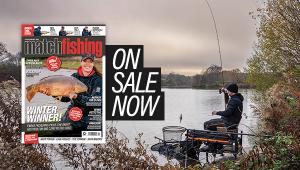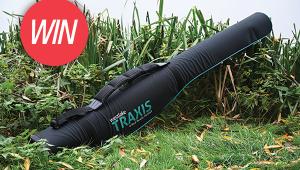Big Carp In The Cold
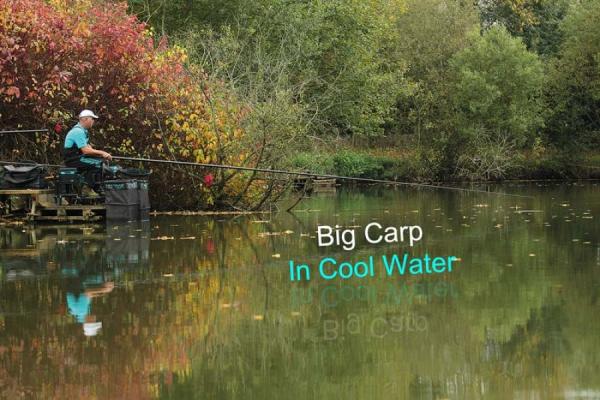
Five-times world champion Alan Scotthorne looks at targeting quality fish in the cold and explains why a plummet is your best friend!
At this time of year on commercial fisheries the target fish should be firmly on the bottom, so all that slapping and shallow fishing has almost gone out of the window! This is when the trusty plummet becomes your best friend, so here are a few tips that should help you get the best out of this simple device.
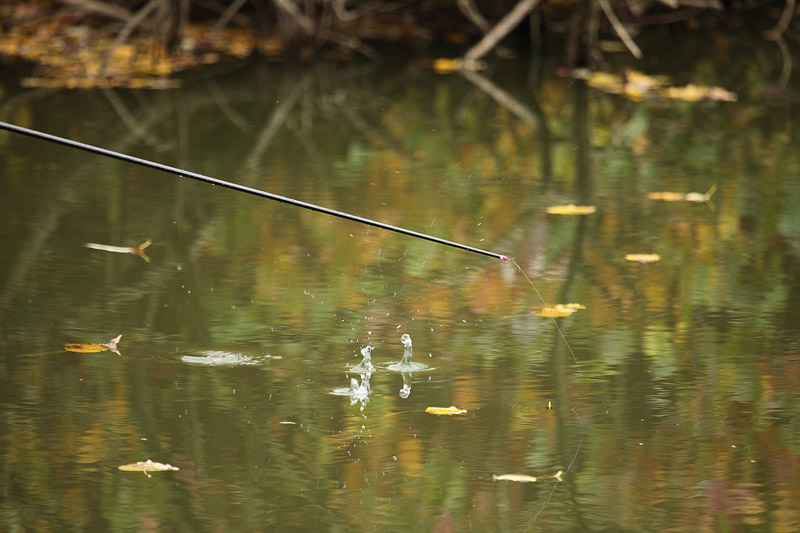
Feed little and often - the fish will often still respond to the noise of bait hitting the water.
Understanding the contours of the bottom of the swim you have drawn is of the utmost importance. I’ve watched anglers plumb their swims in a matter of seconds and this is possibly one of the biggest mistakes made in fishing. Okay, there are times when taking 20 minutes to have a good plumb around is not possible, especially as lots of smaller matches give you little to no time to set up. This has always been a problem that infuriates me, by the way, because this is where a match can be made or destroyed. Quite often I will still take the necessary amount of time when the match has started rather than just chancing that I am fishing in the right places.
In winter matches especially, the fish are often slow to respond. Any extra time spent with the plummet is, therefore, time well spent. This is even more so when as many as six or seven areas might be targeted through the day to get the best out of the peg you have drawn.
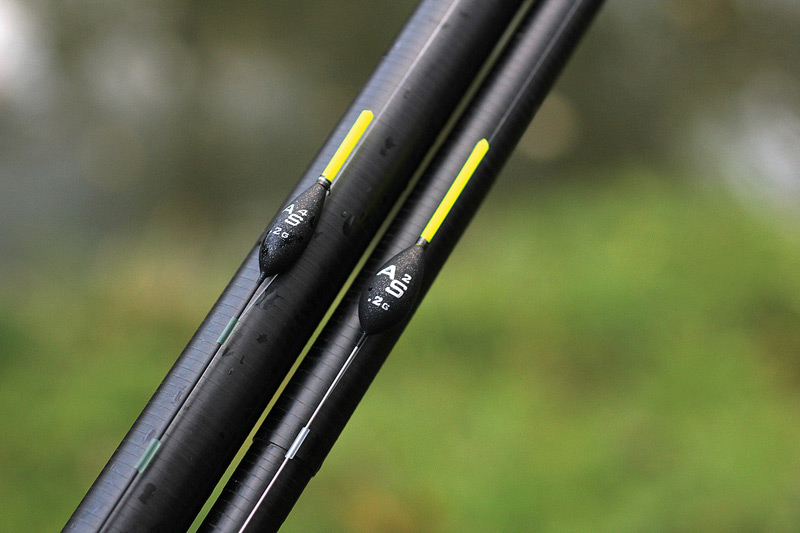
Alan's floats for his 14m line (left) and 5m line.
Anglers who fish on the same venue week in, week out, may feel that they know every peg and that plumbing up is an easy part of their day, but the bottom does change over time. This is especially true when fish are fed regularly on soft and silty areas of a lake. So, even on a peg that I have fished before I will make sure to check that nothing has changed. It will also ensure there aren’t any sunken branches blown in or other hidden obstacles since my last visit.
Taking my local canal as an instance, it is permanently pegged and we nearly all fish a swim around five metres out from the bank, targeting roach. Here the bottom is hollowed out by the fish to the point that there is a discernible trough directly in front of every peg. This can be as much as 10 inches deeper than a metre either side of this point! I normally prefer to fish to the side of this trough, so if the canal tows my bait is not dragged on to the bottom.
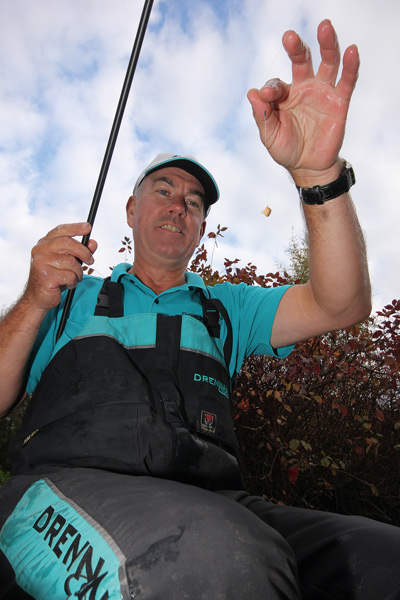
Soft pellets are Alan's number-one winter carp bait.
Going back to commercials, anywhere that bait is very regularly fed – for example, at five metres by hand or on a long pole shallow swim – is often where the bottom is noticeably hollowed out. Finding these areas can hold fish when temperatures drop. On the other hand, these hollows can sometimes be the worst places to fish if the temperatures lift a little and the fish want to move around on the flatter areas of the swim.
Some lakes also have gravel bars where it can often be shallower and the bottom here is nearly always harder than where it is flat. Even just two or three inches of lift on the bottom can be a great area to fish. This is where covering the entire swim with a plummet can turn up a few surprises as to what you are faced with. On the water’s surface, all swims look identical.
Flat and very silty bottoms are always a big problem and this can be located by dropping a reasonably heavy 20g plummet from a height. If it is very silty when you try to lift the plummet the elastic will be pulled from the pole before the plummet is released from the silt. By finding this silty area and then working back towards the bank, you can often find where the bottom starts to lift and becomes harder. This again can be a great place to fish. The bottom will be far less likely to ‘bubble up’ as fish root about, thus making them much easier to catch.
I have watched other anglers plumbing up on many occasions and the number of times I have seen the plummet dropped a foot or so inside the pole or past the pole tip surprises me. This gives them a totally wrong reading; especially when fishing with baits like pellets at dead depth this can be so vitally important. Just being a fraction in the wrong depth can lead to missed bites and, worse still, foul-hooked fish.
Line stretch also plays a part, especially with lighter main lines because these can stretch much more than you might realise under the weight of a plummet. I therefore always lower the plummet to the bottom slowly, making sure it is directly under the pole tip. Hold the line tight to the weight until it hits the bottom but then relax the line so that the float bristle still sits above the surface. I always plumb up with the line relaxed rather than taut to the plummet. This does away with the problem of line stretch and gives you the correct depth.
As I have said, I nearly always use a 20g plummet and prefer one with the old-fashioned cork on its base. The hook cannot have its point damaged and it is also on the bottom, exactly where it should be. For me, 20g is the best weight for stillwaters – not too heavy and not too light. I can also drag it along the bottom to find any obstacles that may be present.
Another great tip is to move it carefully through the swim, just off the bottom. On really cold days you can sometimes locate a ball of tightly shoaled fish for a good starting point. Often, if you do hit a fish, you will see the line touch it or feel it through the pole, but by moving the rig slowly you don’t spook the fish away.

Plumbing up your near-bank margins can also be done with a plummet, but a neat little tip, where allowed, is to use your landing net pole to actually feel what’s on the bottom. It can be surprising what you can feel if you carefully poke around. Some margins have large rocks and stones where your bait could get lost between if you fished with line on the bottom. Knowing what’s down there can really change your approach to this area of the swim. Just make sure you are in your peg so as not to upset your neighbours!
A Day On Rolf’s Lake
Using all of this advice on plumbing up and swim location I have come to Rolf’s Lake in Oxfordshire. I have only fished here once before but I know the carp run big. The temperatures have now dropped, there is little wind and the water is quite clear, so plumbing up will be vitally important. I am sat on quite a narrow peg where I can reach the far bank with around 14.5 metres of pole. It’s a good swim with some form, so I am confident we will get a few bites.
Firstly, I want to fish somewhere close in so that I can throw 6mm hard pellets. This is usually a short swim around five metres out from the bank. It would be very easy to just fish straight in front of the platform I am sat on, but I want to plumb up properly first.
I have set up a 0.3g Drennan AS2 carp float to 0.18mm Supplex line and a 0.15mm Supplex fluorocarbon hooklength to a Kamasan B911 eyed hook to fish with a banded pellet. I have plumbed up from a 10 o’clock angle right around to a two o’clock position and found it to be six inches deeper to my left, with the shallowest part of the swim being straight in front. This shallower plateau may be the best spot to fish in summer, but with temperatures dropping, I think the deeper part of the swim to my left is a better option.

Pinging is often better than pittung when very large fish are the target, in Alan's opinion
This is actually great because when I hook a fish I have lots of room to play it to my right, away from the swim where it will not be interfering with the area I am feeding. This is even more important now that the water is clearing.
Finding that it’s only around a metre deep, I have actually set up another rig. This is a lighter 0.2g AS2 float and I plan to start on this. It has the same setup in terms of line and hook, but with a spread bulk of No11 shot instead of No10s.

Alan's short line produced this beauty almost instantly!
Both rigs are matched to pink Drennan 14-16 Carp Bungee elastic, which is brilliant for big fish but not overpowerful for my 0.15mm hooklength.
This is my starting line and pinching just three pellets in my fingertips, with an underarm flick I can easily land them right round the float tip, equivalent to the top five joints of my Acolyte pole. I have the No6 section also in place but hold the pole right on the joint. This means, once I hook a fish, I can use the extra pole length behind me if the fish decides to move out.
I have plumbed up to set the float dead depth but then added two inches so I am actually very slightly overdepth. I feel this is better than dead depth for these bigger carp wafting around in the peg, which tend to suck the bait right in, giving positive bites. For more cautiously feeding F1s, however, I would probably fish close to the exact depth.
Once happy with where I am fishing I can now cut the line down so I have around eight to nine inches of line above the float. I intend to fish by throwing just three pellets every 40 seconds and regularly lifting and dropping as the pellets hit the bottom. I only lift the float four to five inches, so I am not lifting the pellet away from the carp’s vision. Hopefully, the pellet dropping will be enough to entice a bite from these big, wary fish. I also lift the bait slowly so as not to foul hook any of these large bodies in the swim. This would be catastrophic, so a careful lift is a better option.
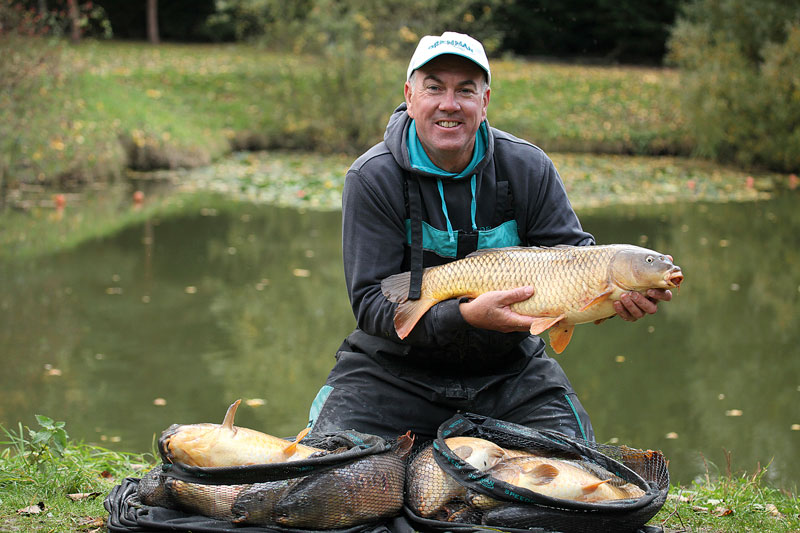
The fruits of a considered winter session.
After 10 minutes I hook my first fish – a 9lb common – and in the first hour I manage six for at least 50lb. A great start on this relatively shallow close-in swim.
With such big fish causing commotion in the clear water I definitely needed another line. I therefore also select a line close to the opposite bank. This is at 14 metres in just two feet of water. I feel it is too shallow any tighter across to hold any number of fish at this time of year and with the increased water clarity.
Hooks and line are exactly the same, but on this spot I opt for a more compact 0.2g AS4 float with a slightly thicker bristle for visibility. I also make sure I have around two feet of line above the rig. The extra length of line is to keep the pole tip well away from the float in the relatively clear water. Three equally spaced No8 ‘back shot’ above the float also help to maintain good control in the slight crosswind.
Knowing the large size of fish present I elect to ping pellets here rather than pot in bait. If I feed via a pole-mounted pot I am sure this will result in foul hooking fish with the feed area being too tight. It seems to work quite well as a run of quality carp also come from this area of the peg. What is noticeable is that the biggest fish all come from the shorter, deeper swim. Therefore, the area I try to concentrate on the most, with the far-bank swim a good place to go when I feel this area needs a rest.
Swapping between both lines I’ve caught really well to end the session with a cracking net of big carp.
Venue File:
Location: Rolf's lake
Address: Waterperry Road, Holton, Oxford, OX33 1PW
Number: 07774618688
Website: www.rolfslake.com
Next time you are on the bank, spend more time with the plummet, be accurate and reap the rewards!
- Log in or register to post comments






